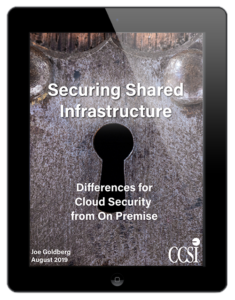Data Loss Protection for the Hybrid Cloud
DLP is a strategy or tool for protecting against data loss or leakage. Data loss is when you lose access to data due to accidental deletion, system breach, or hardware failure. Data leak is the exposure of data due to misconfigured security, malicious sharing, or system infiltration. In this article, you will learn about the importance of DLP and its role in protecting the hybrid cloud.
The Importance of DLP
Organizations invest significant resources in collecting and storing data. Rather than have these efforts go to waste when data is lost or leaked, many organizations are adopting DLP solutions to protect their investments.
Privacy and Compliance Standards
Many organizations are subject to either internal or external privacy and compliance standards. For example, organizations may collect payment card information (PCI), protected health information, or (PHI), personally identifiable information (PII). All of these data types are subject to compliance standards, including GDPR and HIPAA. DLP solutions can help you identify, isolate, track, and audit this data to ensure that you are compliant.
Intellectual Property (IP) Protection
Another type of sensitive data that organizations need to protect is IP data. This includes proprietary code, business intelligence, and financial statements. All of these data types can represent a competitive advantage for organizations, making this data an appealing target for theft. DLP solutions can help you monitor how this data is accessed, by who, and identify where data is stored.
Data Visibility
Even if your data is not high priority, you likely don’t want it freely distributed or modified. DLP solutions can help you monitor the movement, access, and status of data throughout your systems. This can provide insight into how your data is used and help you ensure that it remains protected in every setting.
Hybrid Cloud Security Challenges
Many organizations are adopting hybrid cloud infrastructures for the scalability, availability, and cost benefits these systems provide. However, the distributed nature of hybrid clouds can make these infrastructures and the data stored inside difficult to secure. Some of the most common challenges you might face are covered below.
Encryption
Hybrid clouds involve frequent transfers of data between on-premises and cloud environments. This is especially true for analytics tools hosted in the cloud that derive data from on-premises resources. These transfers provide significant opportunities for data to be intercepted, modified, or corrupted.
Your security position in a hybrid cloud depends on your specific configuration. In general, on-premises data is more secure since someone must be on your private network to access it. In contrast, data in an Internet-facing cloud is most vulnerable since it can potentially be accessed by anyone with an Internet connection.
Encryption is the most effective way to protect data during transfer. It protects data from being modified and ensures that even if data is intercepted, it cannot be used or interpreted.
Security Responsibility
Your responsibilities for data security in the cloud are different than on-premises. On-premises, all security is up to you. In the cloud, your responsibilities depend on the type of cloud services you are using. However, you are always responsible for securing your data.
Variations amongst services can create confusion on how to secure data and inconsistencies in how security policies are applied. To understand how best to secure your data in the cloud or as it is transferred, you need to understand what security tools integrate with both your provider and your on-premise systems. You also need to understand the implications of the various configurations you might choose from.
Human Error
Even if your cloud services are perfectly configured, you cannot control the actions of every user in your system. For example, if an administrator accidentally deletes archived data thinking it’s unnecessary. Or, if a user tries to log into a “portal” after being directed to verify their account by a phishing campaign. While training can help reduce these issues, such incidents are difficult to eliminate entirely.
Hybrid Cloud Data Protection Best Practices
To address the above challenges and keep your data as secure as possible, you should include the following practices in your DLP strategies.
Store Data Selectively
Hybrid clouds enable you to be choosy in where you store your data. For example, you can retain your most sensitive data under the greater protections of your on-premises systems. Before moving data, make sure to carefully evaluate its sensitivity and any compliance regulations that may apply to it.
Backup Data
No matter where or how your data is stored, you need to retain backups of it. This extends beyond simple file syncing and should involve remote, isolated storage. You want to ensure that your data is available regardless of whether an incident occurs on-premises or in the cloud. You also need to ensure that an attacker is not able to access or delete your backups which often means storing it in a third service or location.
Secure all Endpoints
Hybrid clouds involve a host of endpoints to connect all of your various services and users. Each of these endpoints is a potential gateway to your network and your data. Securing your endpoints helps restrict the ability of attackers to infiltrate your systems and exfiltrate your data. To accomplish this, make sure to adopt tools that include features for whitelisting, traffic filtering, and event monitoring.
Conclusion
The adoption of DLP strategies and software has been driven by the tightening compliance standards for sensitive data. The increase of data breach incidents, such as those experienced by Yahoo and Equifax, also had a huge impact on DLP. As cloud computing grows in popularity and internal and external networks merge into hybrid ecosystems, DLP practices become crucial to daily business continuity.
Securing Shared Infrastructure
Differences for Cloud Security from on Premise
Cloud computing is different from traditional on premise IT. The cloud is a shared infrastructure and when using shared infrastructures, organizations do not control much of the technology that underlies the cloud services they engage, especially networking. Shared infrastructures have their own security considerations that should be assessed before embracing the cloud.
Author Bio: Limor Maayan-Wainstein is a senior technical writer with 10 years of experience writing about cybersecurity, big data, cloud computing, web development, and more. She is the winner of the STC Cross-European Technical Communication Award (2008) and a regular contributor to technology publications.
Limor is a guest blogger, all opinions are her own.
The post Data Loss Protection for the Hybrid Cloud appeared first on CCSI.
*** This is a Security Bloggers Network syndicated blog from CCSI authored by Guest Author. Read the original post at: https://www.ccsinet.com/blog/data-loss-protection-cloud/






